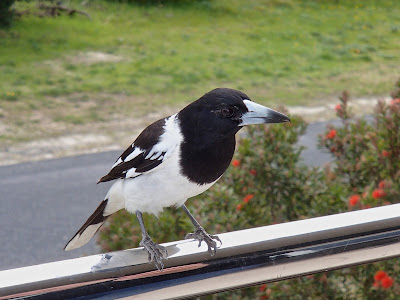An update on how things are progressing at the Fisheries Institute: We are still waiting on the Alexandrium (dangerous algae) to grow enough to begin our major project. In the meantime I have been busy learning to use different equipment, helping with some other projects, and trialling a method for a different experiment.

This bit of kit is a SensorDish Reader which is a very clever bit of kit that measures the oxygen or pH levels inside the tiny chambers (around 4ml) that sit on the reader.
The SensorDish is photosensitive so I first had to create a dark box to perform the experiments in - with an airtight hole in the side to allow the cables that connect the equipment to the computer.
 |
| The lucky candidates |
I went down to the pier and collected some trial beasties (some teeny tiny snails) and popped them into the chambers. Then sealed them up and watched the computer create little graphs of the oxygen readings - which showed the rates of respiration in each chamber.
We did a few experiments with different beasties (and one with algae) to practise using the equipment and to see what kind of readings we would get - looking at response rate and variability etc.
 |
| Example readings |
All very interesting stuff - critical thinking and experimental design. It can sometimes be easy to forget about the logistics of an experiment - exactly how much seawater you might need (at the fisheries institute this is often measured in tonnes!), where that water is going to come from, how it will get there, what size containers, how many times a day to take readings, will measurements need taking at 3am, who will do that, etc. All things that will take up maybe a sentence in a final research paper - but in reality might take days or weeks to think about and organise!
 |
Different concentrations
of algae |
In slightly different news, Australia is experiencing some very cold (for Australia) weather at the moment.
"A strong surge of sub-Antarctic air is travelling across Australia and is expected to affect two-thirds of the country, in the southern and eastern regions. Nicknamed the 'Antarctic vortex', the cold weather is forecast to be the worst in six decades, bringing with it icy conditions and natural snowfalls"
Seems to be that wherever I go I bring unusually cold weather..
..and my parents expected me to come back with a tan..

 We decided to make Oysters Kilpatrick - mainly because I didn't feel completely ready to try nude, uncooked oysters just yet (maybe next time?).
We decided to make Oysters Kilpatrick - mainly because I didn't feel completely ready to try nude, uncooked oysters just yet (maybe next time?).  So after shucking the oysters, and also cutting the muscle connecting the oyster to the other side of the shell, we tipped out the excess juice and placed some thin slices of uncooked bacon on top of the raw oysters. Then we added a little Worcester sauce onto each of them (ok, it was rather a lot of Worcester sauce - I LOVE Lea & Perrins.. on EVERYTHING). Then we chucked them under the grill for a bit until the bacon bits were all crispy.
So after shucking the oysters, and also cutting the muscle connecting the oyster to the other side of the shell, we tipped out the excess juice and placed some thin slices of uncooked bacon on top of the raw oysters. Then we added a little Worcester sauce onto each of them (ok, it was rather a lot of Worcester sauce - I LOVE Lea & Perrins.. on EVERYTHING). Then we chucked them under the grill for a bit until the bacon bits were all crispy.




















































